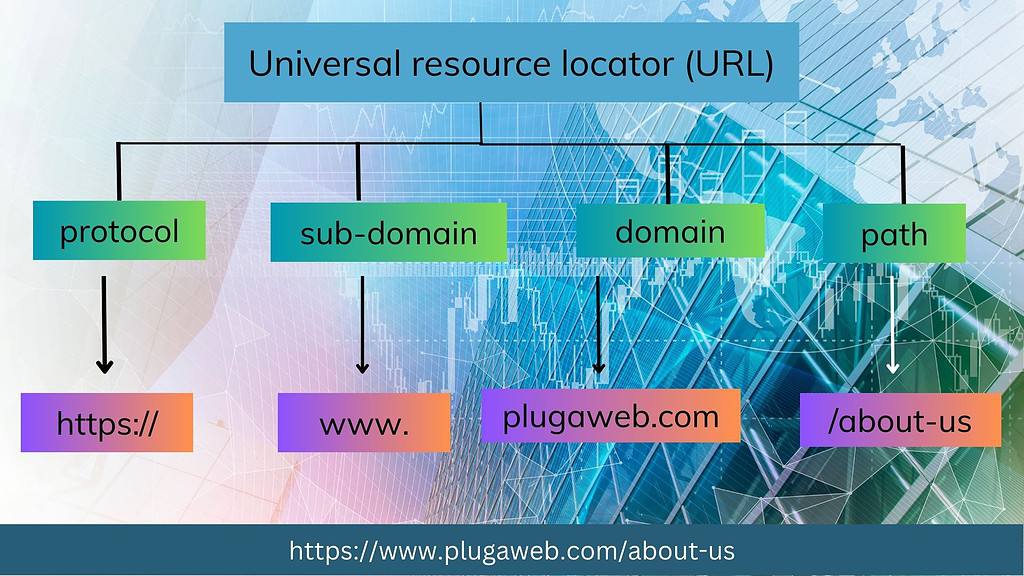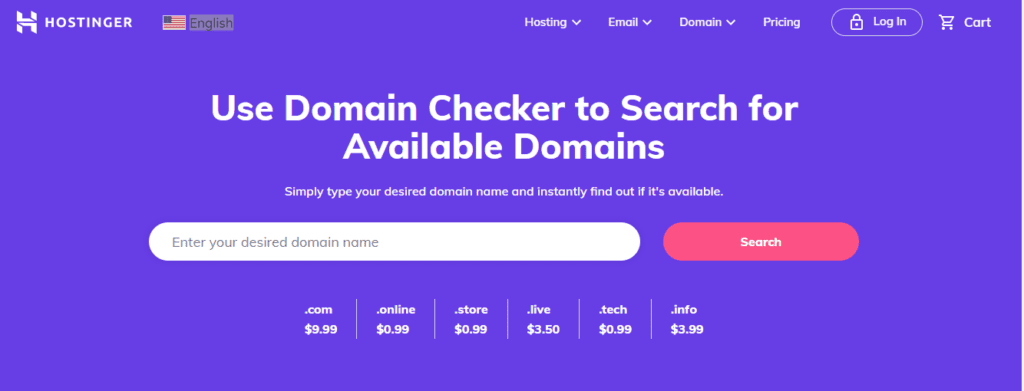This post may contain affiliate links. Without any extra cost to you, we earn from qualifying purchases, if you buy something through one of those links. By clicking on the affiliate links, you automatically agree to our terms and conditions.
Understanding domain name
A domain name is a website’s unique address. It is typically a website name and a domain extension. A memorable domain name makes it easier for your audience to find your website and reinforces your branding.
A domain name is your website’s equivalent of a physical address. It helps users find your website more quickly than your Internet Protocol (IP) address. Domain names, consisting of a name and an extension, are critical Internet infrastructure components.
A domain and a Universal Resource Locator (URL) are similar but not the same. A URL is a complete web address consisting of the protocol (HTTPS), sub-domain (www) domain (plugaweb.com), and path/page (about-us).

A URL comprises three parts: a protocol, a domain, and a path. The protocol indicates whether or not a site has an SSL certificate. It is important to note that URLs only have a path when they direct people to a webpage on a website.
Domain Extensions
A domain extension is a top-level domain. Various TLDs are available online, but.com is the most popular, accounting for more than 54% of all websites. Because users frequently write it by default, a popular extension generates much organic traffic.
However, a less popular extension, such as.net, is frequently less expensive and can make a domain more distinctive. With an increasing number of new websites being created daily, the popularity of a specific TLD may change in the future. Other domain extensions (TLDs) can be confirmed from the Internet Assigned Numbers Authority (IANA) list of all valid TLDs.
Sub-domain
A subdomain is a distinct division of a parent domain that uses the same servers. It is not necessary to register a subdomain. The www in the URLs is technically a subdomain that indicates that a site is part of the world wide web.
The most typical reason for establishing subdomains is organizing and splitting web content into distinct sections. For example, alumni.commgrammarzp.org gives alumni-specific information about a school. A subdomain can also be used to build a website with the same name but in various languages.
Free domain
Website builders and content management systems like eCommerce frequently provide free domain to new users. Beginners typically use this opportunity to build their websites before putting money into their unique domain.
A free web address typically has the same form as a subdomain. You have a free domain like plugaweb.paystack.com instead of plugaweb.com Because free domains depend on other websites’ domain, they frequently come with limited functionality and tools.
The working of a domain
A domain and a web hosting server are the two most essential components of any website. All domain names are associated with their respective IP addresses and point to the web servers that host the websites.
When a user enters a domain name into a browser, it scans a global network of Domain Name System (DNS) servers for the corresponding IP address.
The server then returns the IP address information to the web browser, which requests data about the site from the domain’s hosting service. This web server holds all of the data for the website, including its files, database, and HTML code.
Once the host has returned the data, the web browser converts it into a web page that users can access.
Importance of a domain name
Some of the reasons why you need a name for your business or project are as follows:
1. Memorability. Your audience can technically enter your website without using a domain name by inputting its IP address. However, it is not easy to remember because it is a series of numbers. Imagine having to remember an IP address like 172.217.15.110 instead of google.com. A domain name makes a website more visible to internet users.
2. Branding that works. A well-thought-out name will aid in conveying your business idea in a way that is consistent with the goals and purpose of your brand.
3. Credibility. Websites with custom domain names have seemed more professional than those with free domain names, such as yourwebsite.websitebuilder.com.
4. Customized email addresses. A domain name allows you to create one-of-a-kind and professional email accounts, such as sarah@relishmobilespa.com. It also ensures that your presentation is consistent across multiple online channels.
5. SEO. A memorable domain name having relevant keywords will improve your website’s search engine optimization, leading to higher search engine rankings.

How to buy a domain name
The process of acquiring a domain name from a domain registrar for a set length of time is known as domain name registration. Domain name transfer, on the other hand, refers to the process of moving a domain from one registrar to another.
Consider branding as well as cost while choosing the right domain. Make sure it’s distinctive, catchy, and fits within your budget.
Popular domain are generally more expensive and may already be taken. If the domain you desire is not available, various generators provide alternatives.
Conclusion
We have provided some basic information about domain names. You can see how vital it is to have a good domain for your project. Hostinger is one of the approved ICANN Registrar, where you can check for a brandable domain name.
A domain is a one-of-a-kind address used to access a website. A unique domain name provides several benefits, notably enhancing memorability, branding, and SEO.









